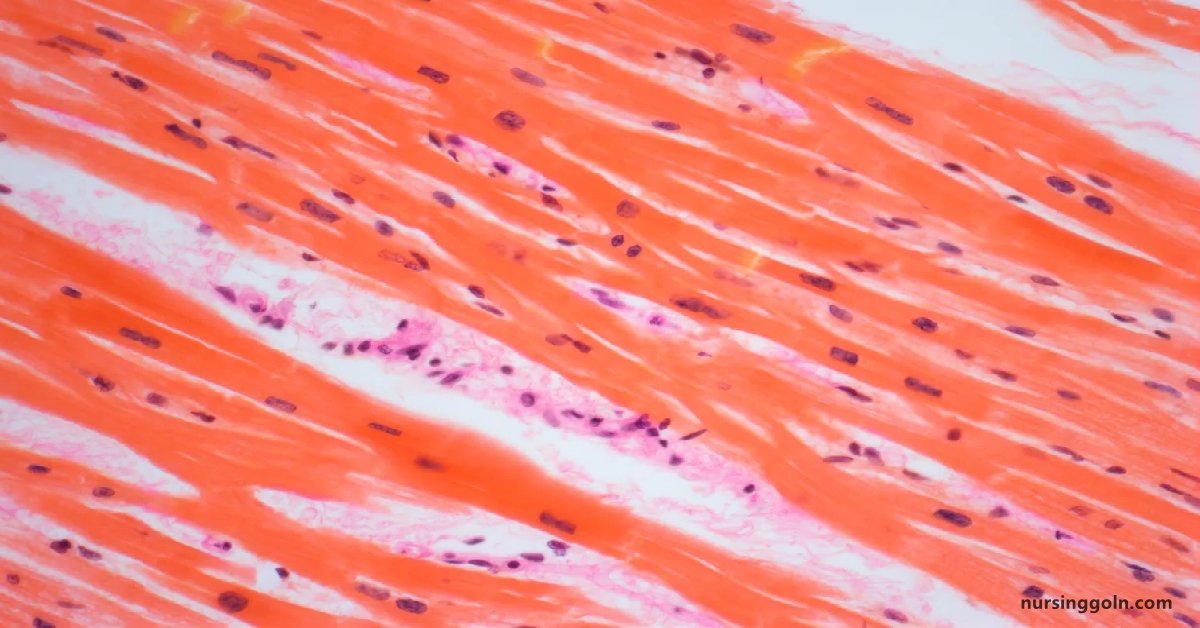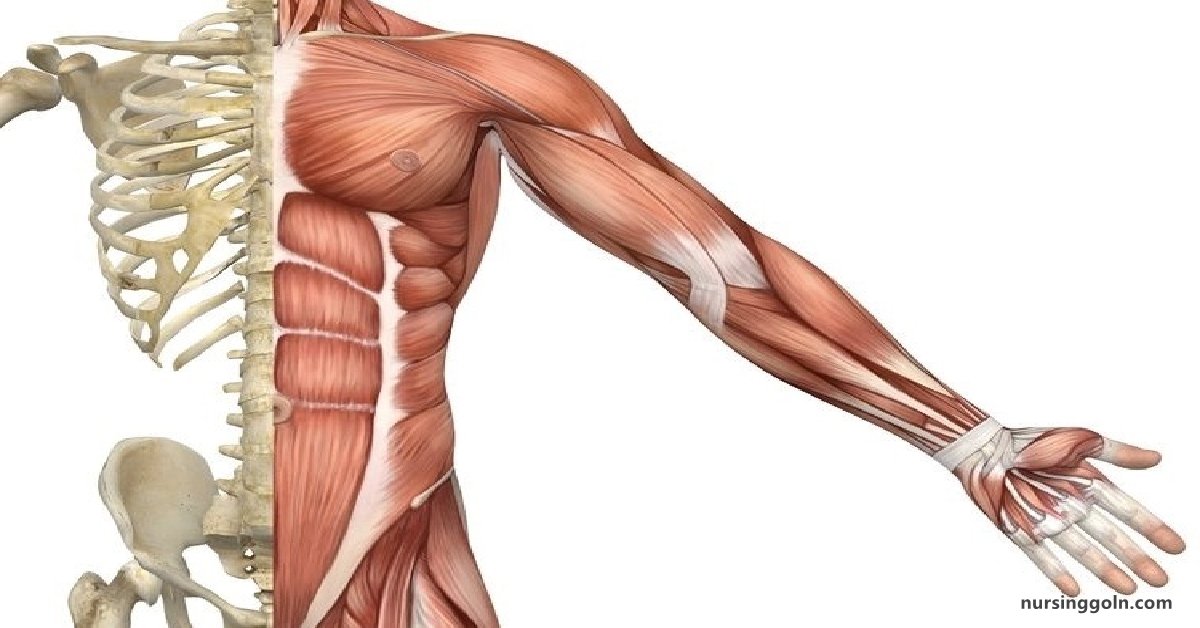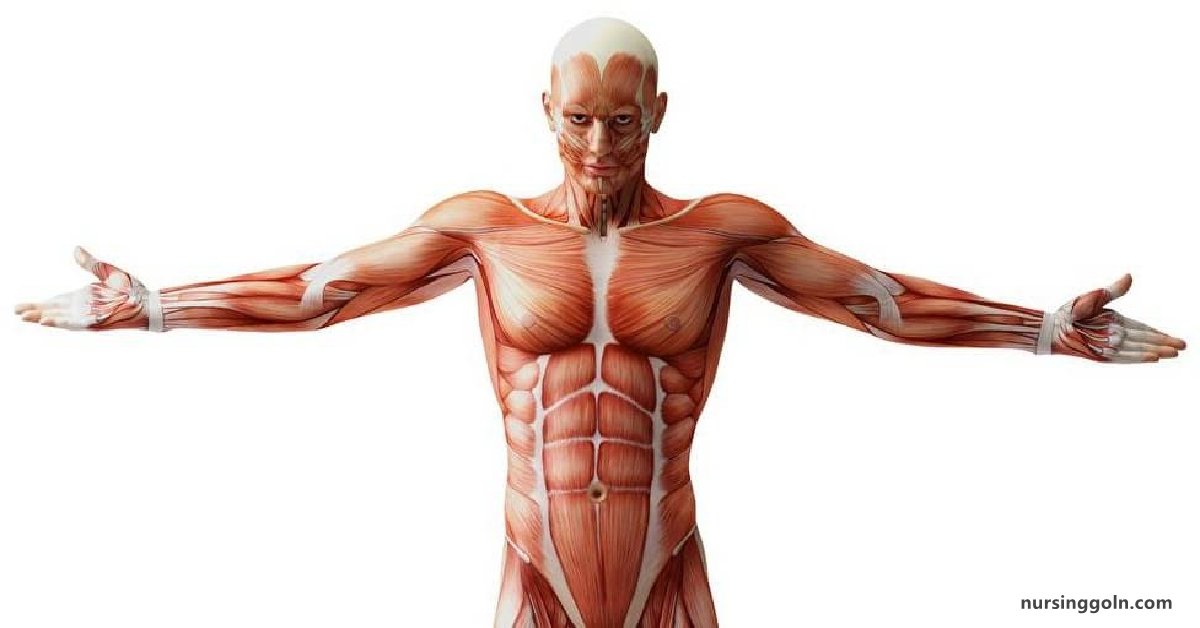Today our topic of discussion is ” Cardiac Muscle Tissue “. The heart, beating tirelessly from before birth until our final moments, is a marvel of biological engineering. Its unceasing rhythms underpin every other physiological process, and at the heart of this vital organ is a unique type of muscle: the cardiac muscle. This article aims to dissect the intricate world of cardiac muscle tissue, emphasizing its structure, function, and how it distinguishes itself from other muscle types.

Cardiac Muscle Tissue: Human Muscle Tissue
1. Introduction to Cardiac Muscle Tissue
Cardiac muscle tissue is one of the three major types of muscle tissue in the human body, the others being skeletal and smooth muscles. Found exclusively in the heart, this muscle type is responsible for pumping blood throughout the body, supplying oxygen and nutrients to cells and removing waste products.
2. Structural Characteristics of Cardiac Muscle Cells
- Striations: Like skeletal muscle, cardiac muscle displays striations, or alternating light and dark bands, under the microscope. These are due to the organized arrangement of actin and myosin filaments.
- Cell Morphology: Cardiac muscle cells, or cardiomyocytes, are typically shorter than skeletal muscle fibers and are often branched.
- Nucleation: Each cardiomyocyte usually contains a single nucleus (though occasionally they can have two).
- Intercalated Discs: A defining feature of cardiac muscle cells. These structures demarcate individual cells and facilitate the rapid transmission of electrical impulses between cells, ensuring coordinated contractions.
3. Functional Attributes of Cardiac Muscle Tissue
- Automaticity: A distinctive feature of cardiac muscle is its ability to initiate its electrical impulses. Specialized cells called pacemaker cells set the rhythm of the heart.
- Rhythmicity: Cardiac muscle contracts in a rhythmic manner, leading to the heartbeat’s regularity.
- Long Refractory Period: This is the time during which the muscle cannot respond to a new stimulus. In cardiac muscle, this period is relatively long to prevent tetany (sustained contractions), which would be catastrophic for heart function.

4. The Electrical System of the Heart
The heart’s ability to contract in a coordinated manner hinges on its intricate electrical system:
- Sinoatrial (SA) Node: Located in the right atrium, this is the heart’s primary pacemaker. It initiates each heartbeat and sets the pace for the entire heart.
- Atrioventricular (AV) Node: Positioned between the atria and ventricles, it delays the impulse slightly, allowing the atria to contract before the ventricles.
- His-Purkinje System: This network ensures the rapid and coordinated spread of electrical impulses throughout the ventricles.
5. Metabolic Aspects of Cardiac Muscle Tissue
The heart, given its ceaseless activity, has immense energy needs:
- Oxygen Reliance: Unlike other muscles, which might switch to anaerobic respiration during intense activity, cardiac muscle is almost entirely reliant on oxygen for ATP production.
- Energy Sources: Fatty acids are the primary fuel, though glucose, lactate, and amino acids can also be used.
- Mitochondrial Density: Cardiac muscle cells are packed with mitochondria, accounting for about 25-35% of the cell volume, ensuring a steady ATP supply.

6. Cardiac Muscle Plasticity
The heart can adapt to changing conditions:
- Hypertrophy: In response to increased workload, such as from high blood pressure, cardiac muscle cells can increase in size. This can boost contractile force but may also lead to cardiac issues if sustained.
- Cell Turnover: While once believed that cardiomyocytes, once lost, cannot be regenerated, recent research suggests a low rate of cell turnover in the adult heart.
7. Comparing Cardiac Muscle with Other Muscle Types
- Skeletal Muscle: Voluntary control, can experience fatigue, multiple nuclei per cell.
- Smooth Muscle: Found in organs like the intestines and blood vessels, involuntary, no striations.
- Cardiac Muscle: Involuntary, striated, intercalated discs present, intrinsic rhythm.

8. Disorders of Cardiac Muscle Tissue
Diseases and conditions that affect cardiac muscle function can have severe implications:
- Cardiomyopathies: Diseases of the cardiac muscle tissue. They can be due to genetic factors, long-standing high blood pressure, or viral infections, among other causes.
- Ischemic Heart Disease: Caused by reduced blood flow to the heart muscle, often due to blocked coronary arteries.
9. Conclusion
Cardiac muscle tissue, a specialized marvel of evolution, powers the heart’s every beat. Its unique properties, from intercalated discs to inherent rhythmicity, highlight its critical role in human physiology. Understanding this tissue type not only offers insights into how our heart functions but also sheds light on the broader realm of muscle biology and the amazing versatility within it.
Read more: